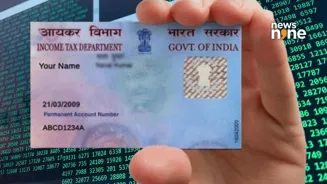Digital Governance Unveiled
E-governance signifies the utilization of information and communication technologies (ICT) by government bodies to enhance efficiency, deliver services,
and bolster public participation. This encompasses a broad spectrum of applications, from online portals for accessing information and services to intricate data management systems that streamline administrative tasks. This digital shift is not merely a technological upgrade; it fundamentally changes the dynamics between the state and its citizens. The goal is to create a more transparent, accessible, and responsive government, and it is achieved through various channels, like online portals and enhanced data management systems.
Key Initiatives Spotlight
Numerous initiatives have been launched across India to implement e-governance, each aimed at addressing specific needs and challenges. Digital India is a flagship program designed to make government services available electronically, improve digital literacy, and foster a digitally empowered society. The Unique Identification Authority of India (UIDAI) has rolled out the Aadhaar system, providing a unique identity to all Indian residents and enabling access to various government schemes and services. Furthermore, initiatives like e-District and e-Panchayat aim to bring services closer to citizens, particularly in rural areas, by digitizing land records and facilitating online access to essential documents.
Technology's Impact: Efficiency
Technology serves as the backbone of e-governance, enabling the swift and efficient execution of bureaucratic processes. Online portals have simplified accessing essential documents, such as birth certificates, and accessing various government schemes. Automated systems are reducing the reliance on manual paperwork, which in turn minimizes delays and errors. Data analytics and artificial intelligence are used to streamline decision-making. This infusion of technology helps in eliminating the need for several lengthy bureaucratic procedures, leading to time and cost savings for both citizens and the government, thereby promoting transparency.
Platform Governance Emerges
Platform governance represents an evolution in e-governance, where digital platforms facilitate direct interaction between the government, citizens, and various stakeholders. These platforms offer a consolidated space for information sharing, feedback, and civic engagement. They are instrumental in providing services like grievance redressal, public consultations, and citizen participation. This approach promotes a more collaborative governance model by enabling citizens to take an active role in shaping policies and influencing decision-making processes. Such platforms also make it easier to measure public feedback for better governance, by providing a transparent environment.
Public Service Revolutionized
E-governance is instrumental in revolutionizing the landscape of public service delivery. Online platforms allow for faster and more convenient access to essential services, leading to increased citizen satisfaction. Digital systems enhance transparency by making government data and processes accessible to the public. This leads to better accountability. Simultaneously, the automation of tasks frees up government employees to focus on more complex tasks, thereby boosting the overall efficiency of public service. The focus on citizen-centric services is a key element of this transformation, as it prioritizes user experience and satisfaction.
Challenges and the Path
Despite the numerous benefits, e-governance faces several challenges. These include the digital divide, where access to technology and digital literacy varies across different sections of society. There are security concerns related to data protection and privacy. Implementation requires constant adaptation to ensure these digital solutions are relevant and useful. Overcoming these challenges is key to unlocking the full potential of e-governance in India. This requires investments in digital infrastructure, promoting digital literacy, and implementing robust cybersecurity measures. Moreover, it demands the continuous updating of policies to match the evolving technological landscape, to ensure that the benefits of e-governance are widespread and sustainable.






